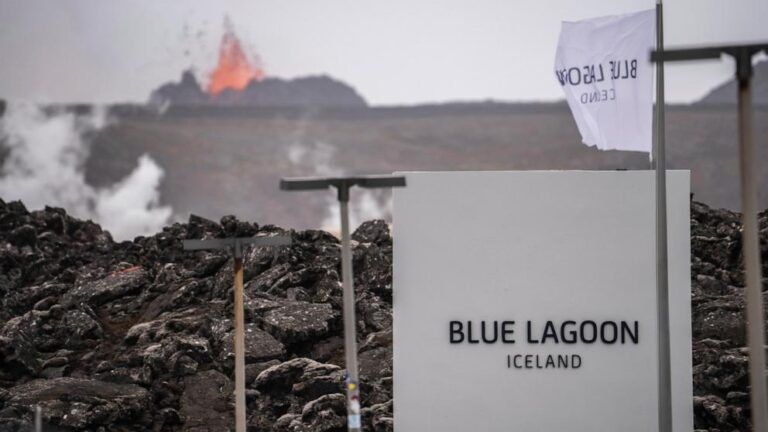The popular Blue Lagoon geothermal spa in southwest Iceland, one of the country’s biggest tourist attractions, has reopened after authorities said a nearby volcano which erupted four days ago had stabilised.
June 2, 2024, 7:43 PM ET
• 2 min read
GRINDAVIK, Iceland — The popular Blue Lagoon geothermal spa in southwest Iceland and one of the country’s biggest tourist attractions reopened on Sunday after authorities said a nearby volcano that erupted four days ago had stabilized.
Oddní Arnarsdottir, head of Iceland’s Tourist Board, said authorities have redesignated safety zones in the area and that based on that it is safe to reopen the lagoon to tourists. “The Blue Lagoon has reopened today,” she said.
Hundreds of tourists bathed in the lagoon with the erupting crater as a backdrop. Cameron and Natalie Pasilio, tourists from North Carolina, said they were glad they could see the volcano from the lagoon.
“It’s so wild. It’s beautiful. I’m glad it’s back up and we can experience it,” Natalie Pacileo said.
Wednesday’s eruption was the fifth and most powerful since the volcano resumed activity in December after an 800-year hiatus, causing a fissure up to 3.5 kilometers (2.1 miles) long to spew record amounts of lava.
Activity last week again threatened Grindavik, a coastal town of 3,800 people, leading to the evacuation of residents of its geothermal hot springs.
Grindavik, about 50 kilometers southwest of Iceland’s capital Reykjavik, has been at risk since a series of earthquakes in November forced evacuation ahead of the initial eruption on December 18. The subsequent eruption destroyed several buildings.
Located in a volcanically active region of the North Atlantic, Iceland regularly experiences eruptions, the most disruptive in recent history being the 2010 eruption of the Eyjafjallajokull volcano, which spewed huge amounts of ash into the atmosphere and led to widespread airspace closures over Europe.

